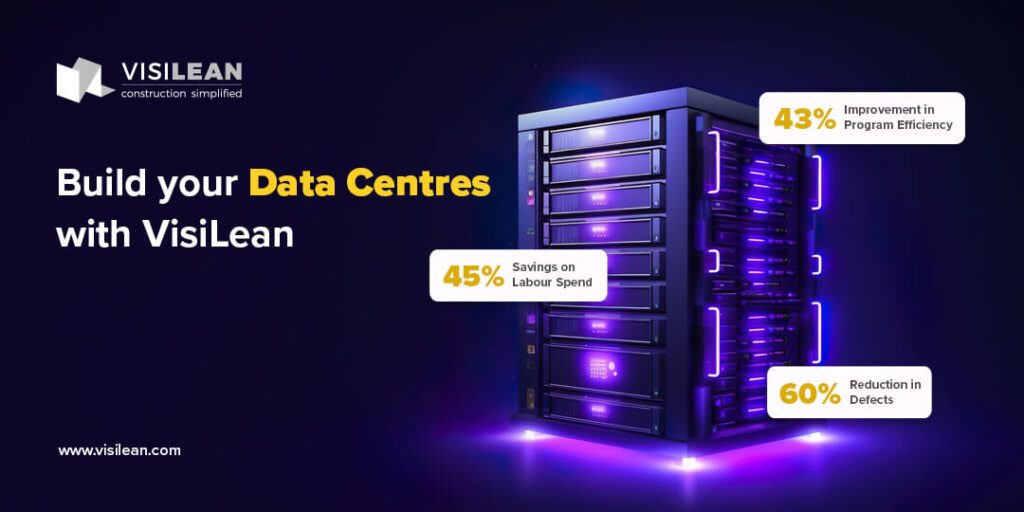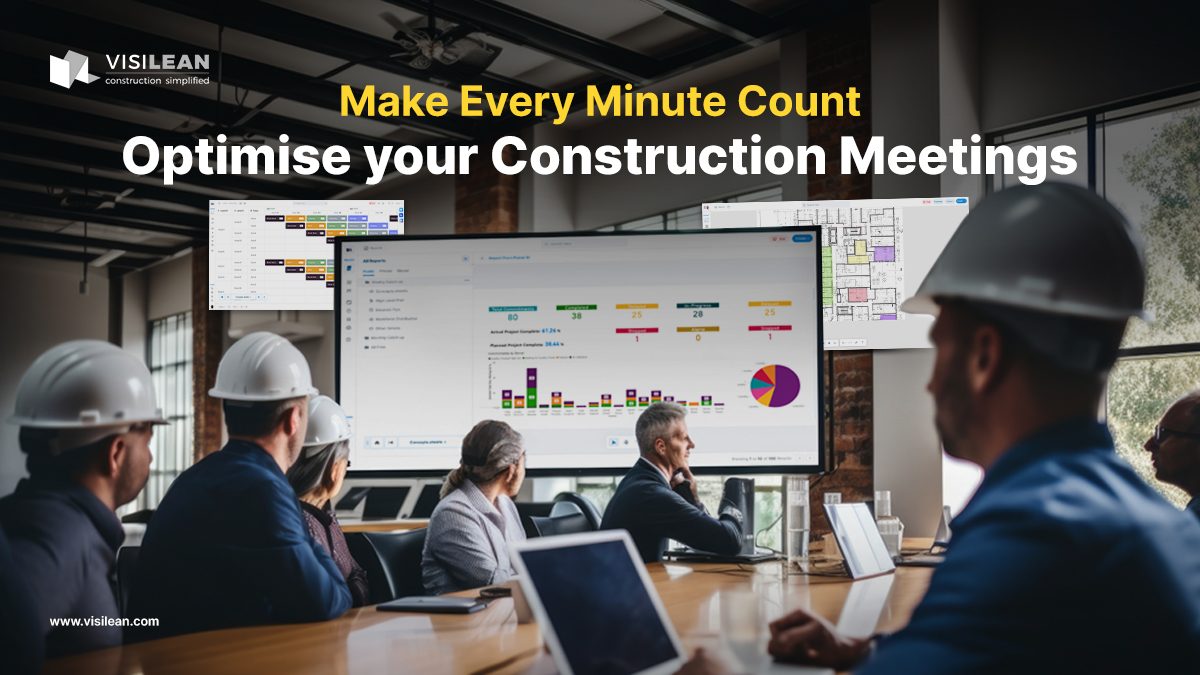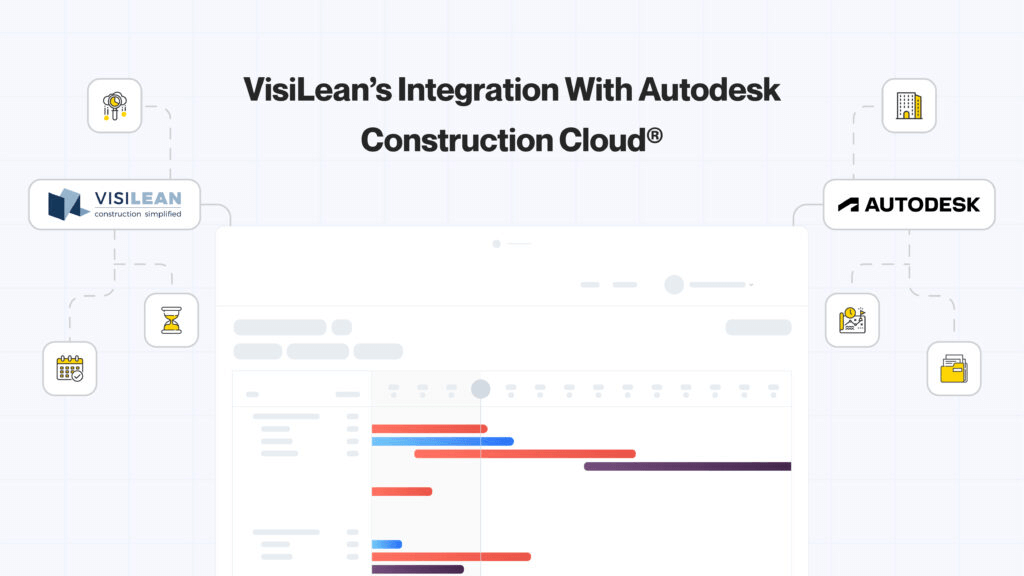Data centres stand as the backbone of the digital world, facilitating the storage, processing, and dissemination of vast amounts of information critical to businesses and industries worldwide. Their functioning as well as development involves a lot of complexities. These challenges include traditional top-down planning, and alignment of trades amidst a strict need for project controls. Mere lack of progress transparency between multiple stakeholders and trades, amidst tight deadlines at stake can throw a wrench in the entire processes. It will also invariably jeopardise the budget.
In this landscape, a siloed approach cannot match dynamic requirements for planning and executing data centre projects. The need-of-the-hour is the adoption of lean construction practices to optimise efficiency, mitigate risks, and control the projects successfully. In this blog, we’ll explore 6 best practices in optimising data centre construction with VisiLean. As a Lean-BIM integrated solution, the platform empowers teams to foster collaboration throughout the project lifecycle. The centralised platform, VisiLean, democratises planning to provide stakeholders complete clarity about the progress status at all times. Whether you’re a data centre owner, developer, or contractor, this blog offers valuable insights to streamline your next project and deliver exceptional results.
1. Overcoming Roadblocks: The Role of Constraints Management
Data centre projects have to fulfil intricate technical requirements, amidst tight timelines. The need for collaboration among the supply chain is essential more than ever. For a successful project delivery, VisiLean facilitates lookahead meetings ranging from 12 weeks to up close 4 or 6 weeks. While the 12WLA works backwards towards the key deliverables, 4-6 LWA deeply concentrates on trade coordination to fulfil them.
Any blockade limiting the execution of these activities can be marked as a Constraint and prioritised for its resolution. Constraints Management is useful in identifying and addressing potential bottlenecks that may impact project progress. This’d ensure smooth execution and timely delivery of the project. VisiLean’s dedicated Constraint Management module plays a key role in discussing the availability of design, space, approvals, space, trade coordination, material, or equipment. An absence of any of these attributes, is flagged by trades as a hold point for them back to deliver the work onsite.
During the lookahead meetings, the agenda is to assign the responsibilities for resolving the constraints before the work is taken to ground. The status of these activities is reviewed during the Weekly Work Plan (WWP) to ensure they are constraint free for execution in the upcoming week. Once cleared, a green light is given to execute the work onsite.
VisiLean offers a task integrated constraints management process. It is extremely friendly for trades to raise constraints even from site, detail them with thorough reasoning while the work is being executed. This advantage plays a notable role in evaluating the reasons behind the recurring constraints with a dedicated dashboard. During the lookahead meetings, these insightful reports can even pinpoint the levels or rooms with open constraints which are to be resolved through effective mitigation plans.
2. Right People at the Right Time: Efficient Workforce Management
Moving towards the execution week brings the make-ready process into picture. Managing the workforce is essential for optimising productivity and ensuring that the right skills are available at the right time in data centre projects. Effective workforce management involves scheduling technicians, engineers, and other specialised personnel for tasks such as equipment installation, cable routing, and system integration.
During the weekly review meeting packages can track the planned workforce for the given trade against the actual workforce deployment using the Table View on VisiLean. Proper workforce management helps to optimise labour costs, improve productivity, and ensure that optimal space is available across the diverse trades especially during the fit-out phase. This would prevent overcrowding on the site and ensure that the projects are completed safely with the highest quality standards.
3. Prioritising Safety by Managing High Risk Work in Data Centres
An integral component of the make-ready process is mapping construction work which has high risk attached to them. Managing them in data centre projects requires meticulous planning, stringent protocols, and unwavering commitment to safety. In these critical environments, identifying tasks such as electrical installations, equipment maintenance, or structural modifications that pose inherent risks to personnel, equipment, or the facility itself is imperative. These measures ensure that all perilous tasks are marked and are undertaken after complying with its requirements.
All these activities are cohesively discussed during the DABs (Daily Activity Briefing). In this meeting all trades are brought to speed about the risk associated in key areas as well as adherence of mitigation measures at the project sites. Ultimately, managing safety hazards in data centre projects requires close collaboration and coordination among all stakeholders for successful execution.
4. Ensuring Quality in Data Centre Construction with VisiLean’s Tracker
Data centres have critical infrastructure, where qualitative construction is paramount. Housekeeping these projects involves managing quality and safety hold-points against critical parts where trades interface for work completion and effective space handovers. The Quality or Handover Events Tracker helps ensure that construction activities meet predefined quality standards and regulatory requirements.
Each and every quality and safety hold-point is mutually agreed and detailed out in the weekly-work plan (WWP) as well as signed off from the responsible stakeholders. By tracking quality metrics and identifying areas for improvement, project teams can maintain high standards of workmanship and deliver a data centre that meets or exceeds client expectations.
VisiLean as a single source of truth documents and tracks all key milestones, quality inspections and handover events. They’re given significant importance by creating dedicated tasks with custom fields on the platform. These tasks are carefully reviewed during the lookahead meet-ups to prevent the teams from causing any delays on ground. Quality as well as Handover Events can be monitored via customised dashboard for quality sign offs and hold points status. This gives the stakeholders clear picture in addressing any issues promptly as well as ensuring that all work meets the required specifications before handover.
Read more on how VisiLean Overcomes Challenges in Data Centre Construction
5. Enhancing Collaboration: Real-Time Progress Visualisation with BIM
Once all the project information is accumulated, visualising it on a BIM model, leads to faster learning and retention of the information as compared to its counterparts. VisiLean plays a critical role in breathing life into the models through live 4D BIM visualisation. This interactive model displays each trade through its identified colour as you progress through the lookaheads. This allows the trades to walk through their flow across the locations of the projects.
The colour clash swiftly translates to trade clash and indicates replanning to efficiently execute the involved task. Having an on-site app linked to the project schedule will reflect any progress information directly on the BIM model. It would also facilitate immediate identification of any delays or discrepancies, enabling prompt decision-making to keep the project on track This transparency enhances trust among stakeholders and promotes accountability across the project team.
6. Leveraging VisiLean for PPC (Planned Percent Complete) Review
PPC is a key component of the Last Planner System (LPS) to review the plan reliability on the basis of trade commitments. Conducting daily or weekly PPC meetings serve several purposes:
- Review progress against the project schedule
- Identify any deviations from the plan
- Ensure everyone involved in the project is on the same page
These regular sync ups are crucial for keeping data centre projects on schedule and within budget.
On VisiLean, PPC reviews can be auto generated on the dashboard itself. This focused information can capture granular level progress updates from daily to even weekly level of the plan executed on site. At the culmination of every week, the detailed PPC is reviewed to test the reliability of the planning inputs provided by the respective trades. This approach promotes transparency among them and their execution instead of addressing delayed tasks in silos.
Additionally, the reasons for variances are also discussed and reported against the said tasks. The customised dashboard collates all the information together to present it as a bundle to the stakeholders for a review. It is useful in performance review of the trades individually as well as evaluating any trends over the past week/s.
It’s an undeniable fact that constructing data centres require precision in planning as well as execution. This blog post has explored 6 best practices in optimising data centre construction coupled With Visilean’s production management solution. These practices propel the projects towards efficiency, safety, and agility. While it may be challenging to undertake them, it’d ensure reliability, scalability and security in the operations of these critical projects. It is crucial for business owners to remain updated with each of these approaches and changing trends to shape the future of data centres.
See VisiLean in action on one the complex Data Centre Projects here.







